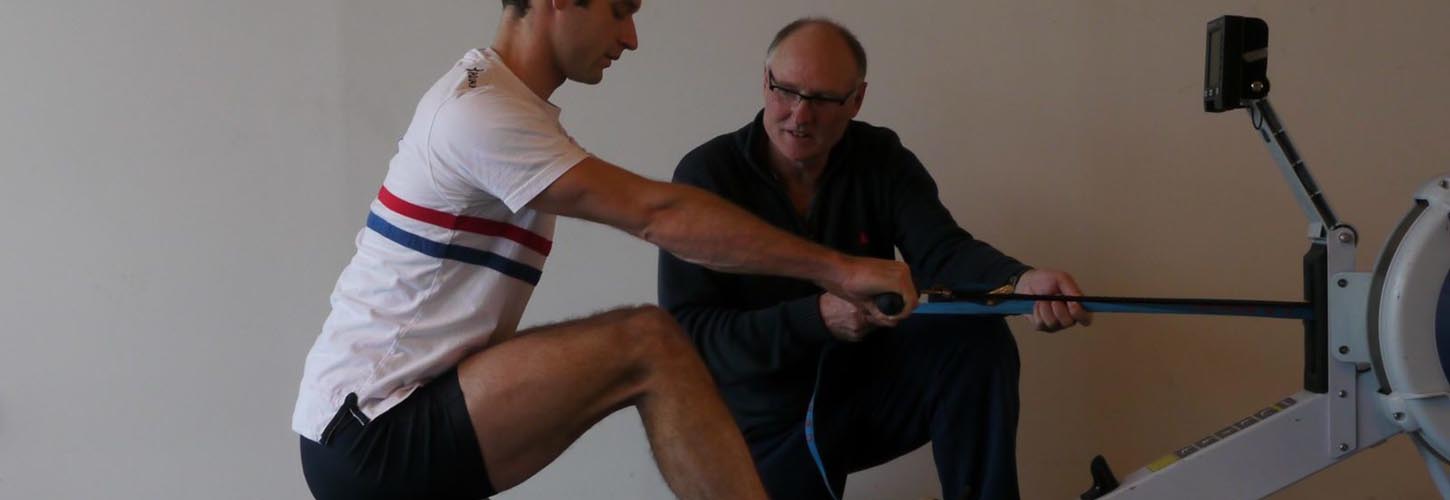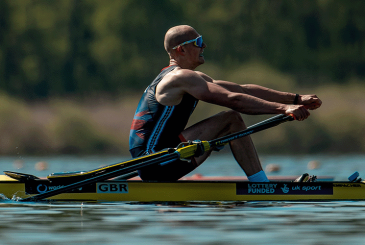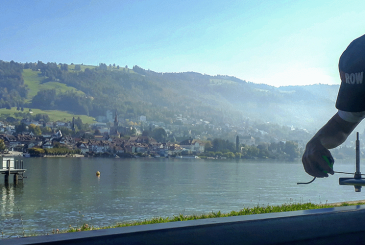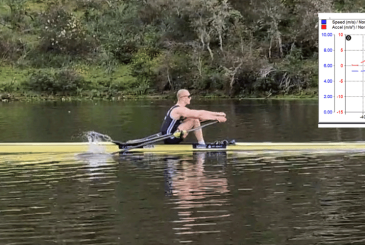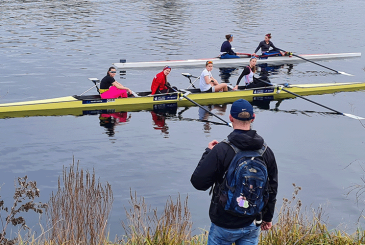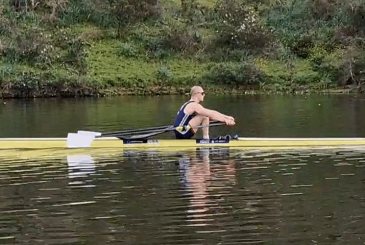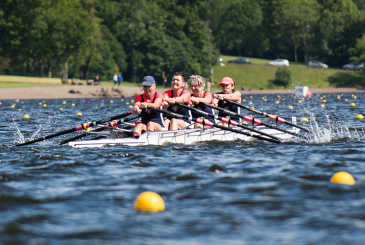Friends and family may do a funny arm-pulling motion when they talk about rowing but anyone involved in the sport knows that your legs are the the principle muscle group that generates boat speed. While the quadriceps produce the bulk of the force, the gluteal muscles or ‘glutes’ are vital in transmitting that force to the trunk and – via the arms – the handle. Martin Gough explores how the correct foot-stretcher height will help you use your glutes effectively.
Paul Thompson, the GB Rowing Team’s lead coach for women till 2018, says athletes should aim to get their heels down onto the footplate as early as possible in the drive, enabling the gluteal muscles to become involved.
“The earlier you get the heels down, the earlier you can engage the glutes,” says Thompson. “In the gym, you don’t do a heavy squat on your toes; you want to be on your heels.
“In a boat, you want to use the big muscle groups when the hull is at its slowest, which is a point just after the catch. Of course this needs to be timed so that the blade is buried first or the boat will be pushed backwards.”
Researchers at Imperial College, London looked into foot positions on the rowing machine in detail in a paper entitled Influence of foot-stretcher height on rowing technique and performance.
What the study found
The study attempted to determine whether adjustments could be made to improve the amount of power athletes were able to create. What they found was a surprise, to some extent.
The research team fitted strain gauges on the footplates of their instrumented ergo in the biodynamics laboratory at Charing Cross Hospital, measuring different components in foot force. ‘Horizontal force’ is viewed as being good for creating boat speed as its direction is parallel to the water, while ‘vertical force’ is seen as less useful because it pushes the boat into the water.
In purely mechanical terms, horizontal force is increased when the feet are raised. However, unless an athlete can hold a strong position through the drive, they may be unable to take advantage of that and the risk of injury will increase.
But in reality, the study of 10 male rowers – all of whom had rowed internationally at Under 23 level – showed no increase in horizontal force with raised foot stretchers.
“The earlier you get the heels down, the earlier you can engage the glutes”
Previously, we looked at the ‘lumbar-pelvic ratio’ – the difference in angle between the lower back and pelvis – and saw that the stroke is more efficient and the risk of injury lower if the ratio is as close as possible.
This study suggested that the discrepancy between mechanical theory and reality may be that ‘the reduced ability to anteriorly rotate the pelvis at the front of the stroke may be a key obstacle in gaining benefits from raised foot-stretcher heights’. In other words, if an athlete is unable to rock over and hold a good position into the catch, they will be unable to perform as effective a stroke.
“You are looking to find a happy medium of good position and effective power output,” explains Liz Arnold, a senior physiotherapist at the English Institute of Sport, who works with the GB Rowing Team.
“If you increase the seat-to-feet distance [i.e. lower the feet], you change the angles at the hip, ankle and pelvis and reduce the tension around the back and hips.
“Moving the feet down might be more desirable in an athlete with a stiff hip or a long thigh as it allows them more space to get into the front stops.
“But there is an optimum point: if you go too far, you reduce the horizontal force production.”
The study concluded that ‘rowers must individually fine-tune their foot-stretcher height to optimise power transfer through the rowing stroke on an ergometer’.
How to get the best set-up
Within the GB Rowing Team, the question of a change of set-up is likely to be collaborative, involving the athlete, coach, physio and boatman.
Of course, when you move from the rowing machine to water, the issues of set-up become far more complex. Thompson cites the difficulties involved in getting Olympic silver medal double scull Vicki Thornley and Katherine Grainger moving through similar arcs when they had a four-inch height difference. The solution involved moving spans on riggers and in-board lengths on blades as well as looking at foot positions.
In a club setting, the whole process may involve a little more experimentation, changing one element at a time and noting changes.
Exercises to develop glute engagement
In order to build awareness of the role of the glutes, Thompson suggests an exercise using an ergo with the handle restricted by a boat tie or strap held by the coach. This allows a very slow, suspended stroke, which the coach can stop at any point to make sure the right muscles are engaged.
He explains: “If they engage their glutes and drive through the heels you can’t hold them easily but if they lift with the back you can hold them with one hand.”
Thompson emphasises the importance of gym work to make it easier to get into a strong position and to effectively transfer power from footplate to handle.
He says: “You need to be flexible enough to get into position; if not then you are leaking watts. The aim is to have long hamstrings and hip flexors to go with strong lower abdominals and glutes.”
This article was first published in Rowing & Regatta magazine in December 2017.


